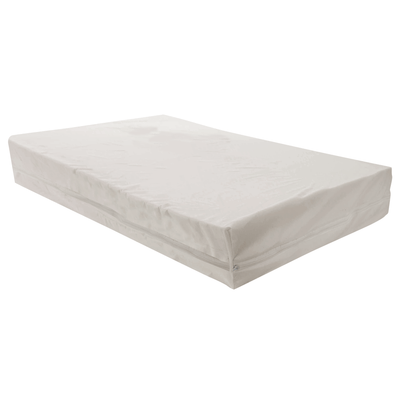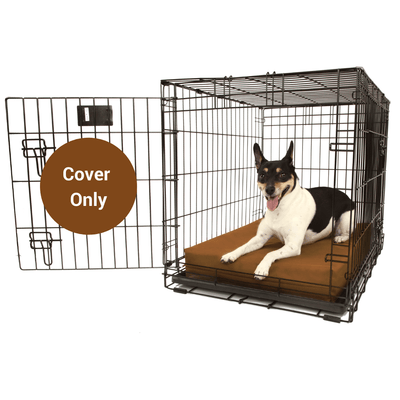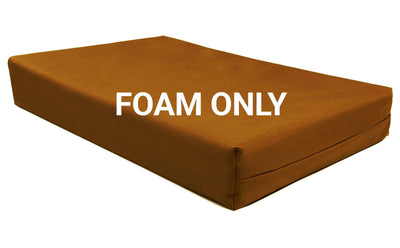
What Is Hip Dysplasia?
In the top photo you will see a canine Femoral Head in the correct location of the hip socket. When the canine moves, the pressure distribution will be even even when given a large amount of weight. (Giant breed dog, etc). The bottom photo, however, shows a Femoral Head pulling away from the hip socket. This is called laxity. When pressure is placed on these hips, the hips will feel weak and painful due to the disease called Hip Dysplasia.
Hip Dysplasia Begins In Puppyhood
Hip Dysplasia, although is not present when your puppy was born, does begin in puppyhood. "In very young dogs (6-9 months) the joint is lax and the femoral head slides partially out, and back into the acetabulum. This is known as subluxation", Colorado Canine Orthopedics speaks to this painful pediatric issue.
What Causes Hip Dysplasia
Hip Dysplasia is both genetic and environmental. That means your puppy could be predisposed to getting Hip Dysplasia, but also could develop Hip Dysplasia from environmental factors as well. In other words, Hip Dysplasia is both nature AND nurture. The Institute of Canine Biology says, "A number of non-genetic (environmental) factors are known to affect the risk of developing hip dysplasia, and some of these appear to be especially critical to manage properly in the puppy. Housing on a slippery floor, access to stairs, and some types of exercise can significantly increase risk in puppies. Higher weight at birth and while growing elevates risk. On the other hand, dogs raised on farms and those born in spring and summer are less likely to develop hip dysplasia. Aside from nutritional deficiencies, or overconsumption that leads to overweight, there is no evidence that the type of the diet plays a role in development of dysplasia. Although exercise in the adult might lead to clinical signs of pain or lameness, there is little evidence that the amount of exercise alters the progression of development of osteoarthritis once the dog matures. Dogs neutered before 6 months have a higher risk of developing hip dysplasia".
Now What?
It is important to verify that a new puppy you are getting has parents who have had their hips health tested. The Orthopedic Foundation for Animals assesses dogs hips' before breeding in order to identify their possibility of passing hereditary hip diseases down to a litter. OFA Hip Tests grades dogs hips on the following scale:
- Excellent: Superior conformation; there is a deep-seated ball (femoral head) that fits tightly into a well-formed socket (acetabulum) with minimal joint space.(acetabulum) with minimal joint space.
- Good: Slightly less than superior but a well-formed congruent hip joint is visualized. The ball fits well into the socket and good coverage is present.
- Fair: Minor irregularities; the hip joint is wider than a good hip. The ball slips slightly out of the socket. The socket may also appear slightly shallow.
- Borderline: Not clear. Usually more incongruency present than what occurs in a fair but there are no arthritic changes present that definitively diagnose the hip joint being dysplastic.
- Mild: Significant subluxation present where the ball is partially out of the socket causing an increased joint space. The socket is usually shallow only partially covering the ball.
-
Moderate: The ball is barely seated into a shallow socket. There are secondary arthritic bone changes usually along the femoral neck and head (remodeling), acetabular rim changes (osteophytes or bone spurs) and various degrees of trabecular bone pattern changes
(sclerosis). - Severe: Marked evidence that hip dysplasia exists. The ball is partly or completely out of a shallow socket. Significant arthritic bone changes along the femoral neck and head and acetabular rim change
The Orthopedic Foundation for Animals will evaluate results of hip assessments and determine whether that animal should be passing genes on into a new litter of puppies. If you are looking to buy a puppy from a breeder, asking the breeder if they OFA test both the male and female for hips is a great step to take in protecting your future puppy.
If you are interested in learning more about Giant and Large Breed Hip Dysplasia and general health, make sure to check out The Institute of Canine Biology. And lastly, as always, if you’re interested in additional information or advice about Hip Dysplasia, be sure to check out our instagram where we link helpful articles from veterinarians and research journals. From helpful studies about feeding to training to health, we believe in finding the many resources available from veterinarians to help you and your big dog!
You May Also Like:
Canine Orthopedics Hip Dysplasia
How to Cut Large Dog Nails and Have Your Dog LOVE It (7 Tips)











